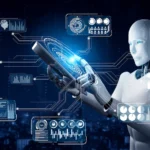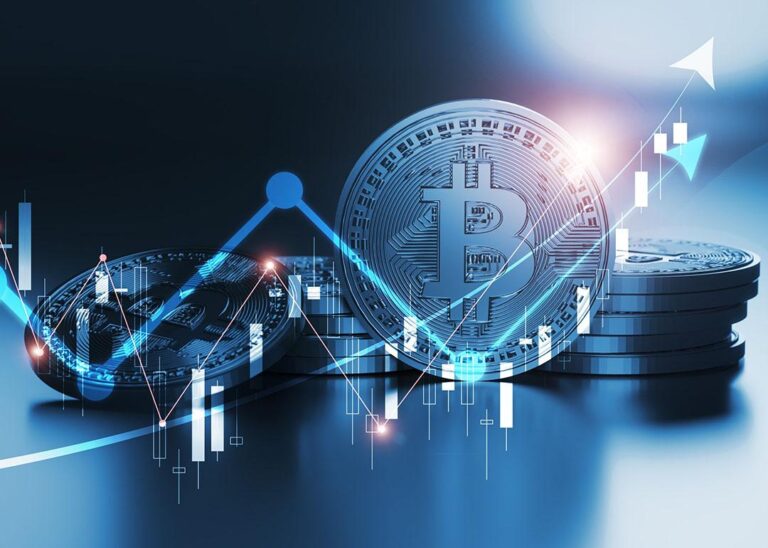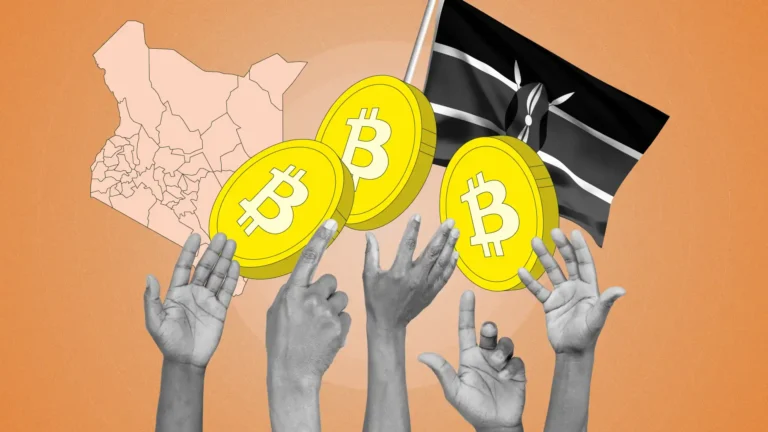Blockchain has been hailed as the backbone of the decentralized revolution, enabling trustless transactions, smart contracts, and decentralized applications (dApps). Yet, despite its potential, scalability remains one of its most persistent challenges. Public blockchains, like Bitcoin and Ethereum, often struggle to process thousands of transactions per second without high fees or slow confirmation times. Enter …
Can AI Make Blockchain Truly Scalable?

Blockchain has been hailed as the backbone of the decentralized revolution, enabling trustless transactions, smart contracts, and decentralized applications (dApps). Yet, despite its potential, scalability remains one of its most persistent challenges. Public blockchains, like Bitcoin and Ethereum, often struggle to process thousands of transactions per second without high fees or slow confirmation times.
Enter artificial intelligence (AI) — a technology renowned for optimization, prediction, and decision-making. As blockchain networks grow more complex, AI is emerging as a potential solution to one of crypto’s most stubborn problems: scalability. But can machines truly make decentralized systems scale without compromising security or decentralization?
Understanding the Scalability Challenge
Blockchain scalability is often described as a trilemma: balancing decentralization, security, and speed. Many projects attempt to increase transaction throughput by sacrificing either decentralization or security.
- Bitcoin prioritizes security and decentralization but can handle only around 7 transactions per second.
- Ethereum, even after upgrades like Ethereum 2.0, faces congestion issues during periods of high activity.
The challenge is not merely technical; it is architectural. Every node in a blockchain network must validate transactions, which limits the speed at which the network can process data. As adoption grows, these constraints become bottlenecks.
This is where AI enters the equation — not as a replacement for blockchain, but as an intelligent layer to optimize its performance.
AI-Driven Network Optimization
One way AI can improve scalability is through network optimization. Machine learning algorithms can analyze network traffic, node performance, and transaction patterns to predict congestion and dynamically adjust resource allocation.
For instance:
- AI can identify underutilized nodes and reroute transactions to optimize throughput.
- Predictive models can anticipate peak usage periods and proactively adjust block sizes or transaction prioritization.
- Reinforcement learning algorithms can continuously fine-tune consensus mechanisms based on observed network conditions.
By managing network resources intelligently, AI can help blockchain networks process more transactions efficiently, reducing delays and lowering fees.
Consensus Mechanisms and AI
Consensus algorithms, which validate and agree on the state of a blockchain, are critical to scalability. Traditional methods, like Proof of Work (PoW), are notoriously resource-intensive. Even newer approaches, like Proof of Stake (PoS), face limits in speed and efficiency.
AI offers a pathway to smarter consensus:
- Adaptive consensus: AI models can dynamically select nodes for validation based on performance, reliability, and network conditions.
- Predictive validation: Machine learning can forecast which transactions are likely to be disputed or reversed, prioritizing conflict-free transactions.
- Fault detection: AI can identify malfunctioning or malicious nodes in real time, ensuring that only trustworthy participants influence the network state.
These techniques can reduce wasted computation, accelerate block propagation, and ultimately increase the transaction throughput of decentralized networks.
AI and Layer-2 Scaling Solutions
Layer-2 solutions, such as rollups and state channels, aim to handle transactions off-chain to alleviate mainnet congestion. AI can complement these approaches by predicting transaction loads and optimizing off-chain operations.
For example:
- Machine learning can forecast which channels are likely to become congested and automatically redistribute funds.
- AI-powered routing algorithms can optimize payment paths in state channels, minimizing latency and maximizing throughput.
- Predictive monitoring can detect potential bottlenecks in rollups and trigger preemptive adjustments.
In essence, AI doesn’t replace Layer-2 solutions; it makes them smarter, faster, and more reliable.
Intelligent Smart Contracts
Smart contracts are the programmable heart of blockchain ecosystems, but complex contracts can slow networks when poorly optimized. AI can help by analyzing smart contract code for efficiency and even autonomously suggesting or implementing optimizations.
- Machine learning can detect redundant computations or potential deadlocks before deployment.
- AI can recommend restructuring of contracts to minimize gas usage and execution time.
- Predictive models can prioritize high-value contract interactions during peak network activity.
Over time, AI-driven optimization could make dApps more efficient, reducing strain on the blockchain and increasing overall scalability.
Data Storage and Sharding
Blockchain data grows exponentially, and storing it efficiently is crucial for scalability. Traditional approaches involve sharding — splitting the blockchain into manageable segments. AI can enhance this process by:
- Predicting shard utilization: Determining which shards are likely to handle heavy traffic and dynamically reallocating resources.
- Optimizing data placement: Ensuring that frequently accessed data is stored on nodes that can serve requests fastest.
- Reducing redundancy: Using AI to manage replication intelligently without compromising fault tolerance.
With these optimizations, sharded blockchains can scale horizontally without bloating the network or compromising security.
Challenges and Limitations
While AI offers promising solutions, integrating it with blockchain is not without challenges:
- Decentralization vs. AI Control: Relying heavily on AI could create centralization risks if a few models dictate network behavior.
- Data Integrity: AI needs high-quality data to function effectively. Faulty or manipulated data can lead to poor optimization decisions.
- Complexity: Combining AI and blockchain increases system complexity, which could introduce new vulnerabilities.
- Ethics and Governance: Autonomous AI decisions on decentralized networks raise questions about accountability and transparency.
Achieving scalability through AI requires careful design to preserve the core principles of blockchain while maximizing efficiency.
Africa’s Role in AI-Blockchain Innovation
Africa is emerging as a fertile ground for AI-powered blockchain solutions. With rapid mobile adoption, a growing tech ecosystem, and a young population eager to innovate, the continent is uniquely positioned to explore scalable decentralized networks.
Potential applications include:
- Financial inclusion: AI-optimized blockchain networks for microfinance, remittances, and mobile payments.
- Supply chain transparency: Scalable blockchain systems for tracking agricultural or industrial goods.
- Energy trading: AI-managed decentralized grids for renewable energy distribution.
By focusing on intelligent scalability from the start, African innovators can leapfrog traditional inefficiencies and create systems that are both robust and future-proof.
The Future: Autonomous, Scalable Blockchains
AI is more than just a tool—it’s a force multiplier for blockchain scalability. By intelligently managing networks, optimizing consensus, predicting congestion, and refining smart contracts, AI has the potential to make blockchain truly scalable without sacrificing decentralization or security.
We are approaching an era where blockchain networks are not only decentralized and secure, but also self-optimizing, adaptive, and capable of handling global-scale applications. AI doesn’t remove blockchain’s challenges, but it provides the intelligence necessary to navigate them effectively.
Conclusion: Smarter Chains for a Growing World
Scalability has long been the Achilles’ heel of blockchain technology. While Layer-1 upgrades and Layer-2 solutions help, they are often incremental. AI introduces a dynamic, adaptive layer that learns from the network, predicts stress points, and optimizes operations in real time.
The combination of AI intelligence with blockchain decentralization could finally unlock the capacity needed for mass adoption. If implemented thoughtfully, this synergy has the potential to power global decentralized economies capable of supporting millions of users, applications, and transactions seamlessly.
The question is no longer whether blockchain can scale—it’s whether we can leverage intelligent systems to help it scale responsibly. The future of decentralized technology may very well depend on it.








